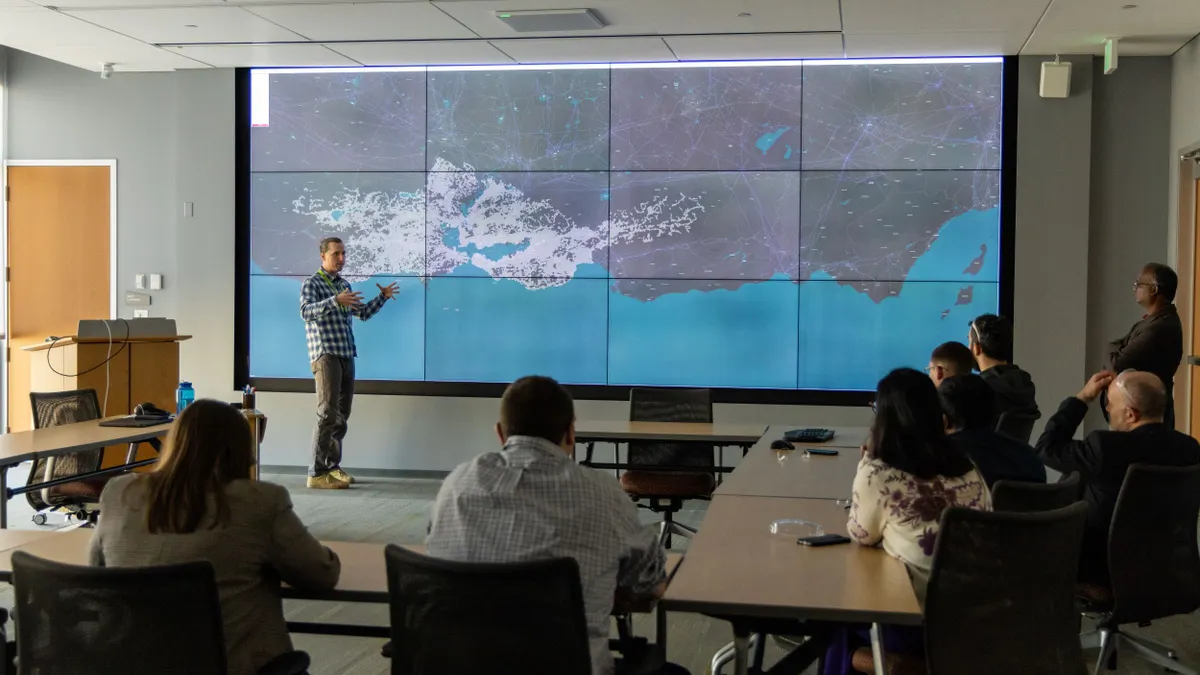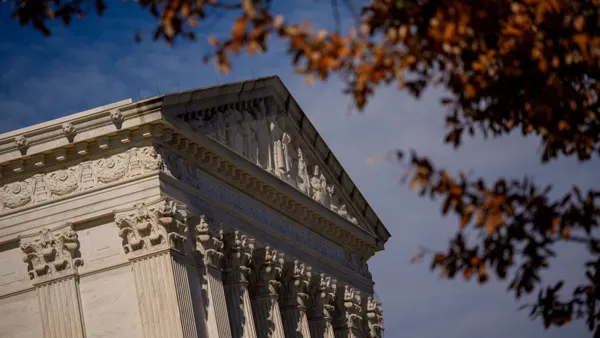Dive Brief:
- Utility customers in seven PJM Interconnection states are being charged $4.4 billion for transmission upgrades approved last year needed to bring data centers online, with similar results expected this year, according to a report from the Union of Concerned Scientists.
- The costs for local transmission needed for data centers falls into a “regulatory gap,” with the expenses for the upgrades typically being shared by all customers within a utility’s footprint, Mike Jacobs, senior manager in the UCS Climate and Energy Program, said in the report released Monday.
- The report calls for heightened oversight of data center-related transmission costs. “State and federal regulators must require that costs be assigned to the specific customer — or an appropriate rate class that is causing the costs — to avoid subsidization by all other customers,” Jacobs said in the report.
Dive Insight:
The report comes as state and federal regulators and policymakers are grappling with how to manage a surge in planned data centers across the United States — and how to protect ratepayers from the costs of the power plants and transmission lines needed to support the effort.
In PJM, for example, data centers are a key factor driving up capacity costs that have led to double-digit electric bill increases in some PJM states, according to the grid operator’s market monitor. PJM runs the grid and wholesale power markets in 13 Mid-Atlantic and Midwest states and the District of Columbia.
The UCS report covers another aspect affecting some ratepayers: transmission costs and how they are allocated.
Utilities initiated more than 150 local transmission projects to serve data centers from 2022 to 2024 in Illinois, Maryland, New Jersey, Ohio, Pennsylvania, Virginia and West Virginia, according to the report. In those states, about $4.4 billion in projects were approved last year, with nearly half the costs in Virginia, the largest data center hub in the world, the UCS found.
Data center-caused transmission costs approved in 2024
Currently, the costs caused by a single utility customer are not differentiated or separated when annual local transmission plans are processed and electric rates are calculated, Jacobs said in the report. Utility plans for building data center-related transmission are disclosed during “informational” briefings in PJM’s transmission planning process, but the information isn’t used during state reviews of utility retail rate proposals, according to Jacobs.
The UCS report makes four recommendations:
- The Federal Energy Regulatory Commission should require a customer that causes new transmission to pay for it, like the agency does for power plants;
- It also should require utilities to create a customer class for customers with direct transmission connection costs in the agency’s formula rates;
- FERC and state public utility commissions should require utilities to track transmission costs caused by specific customers through rate-setting processes; and,
- State utility commissions should require utilities to recognize the transmission costs created by direct connection customers in retail rate cost-of-service studies.















